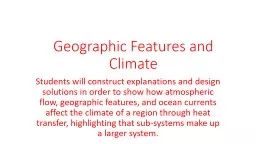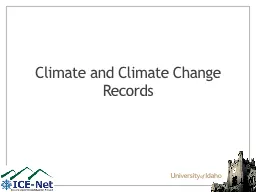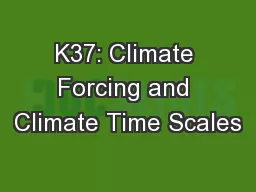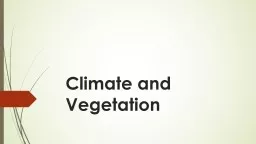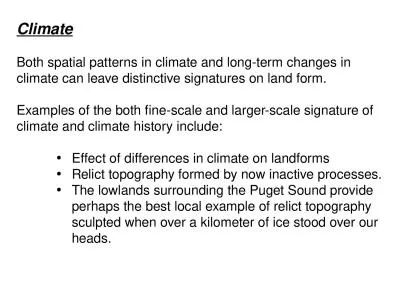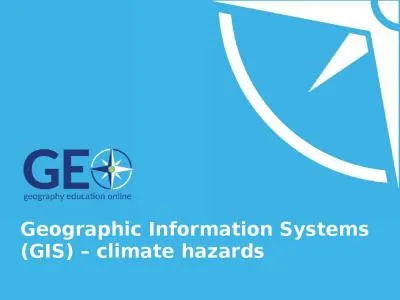PPT-Geographic Features and Climate
Author : camstarmy | Published Date : 2020-06-15
Students will construct explanations and design solutions in order to show how atmospheric flow geographic features and ocean currents affect the climate of a region
Presentation Embed Code
Download Presentation
Download Presentation The PPT/PDF document "Geographic Features and Climate" is the property of its rightful owner. Permission is granted to download and print the materials on this website for personal, non-commercial use only, and to display it on your personal computer provided you do not modify the materials and that you retain all copyright notices contained in the materials. By downloading content from our website, you accept the terms of this agreement.
Geographic Features and Climate: Transcript
Download Rules Of Document
"Geographic Features and Climate"The content belongs to its owner. You may download and print it for personal use, without modification, and keep all copyright notices. By downloading, you agree to these terms.
Related Documents

